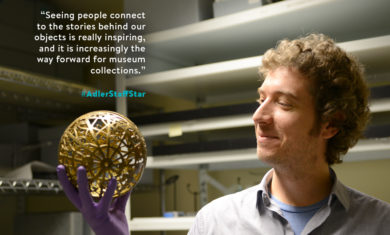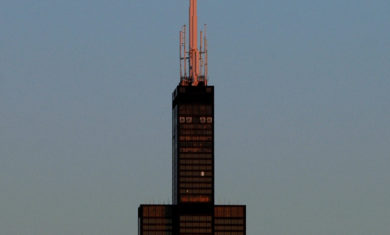Adler Skywatch: April 2023
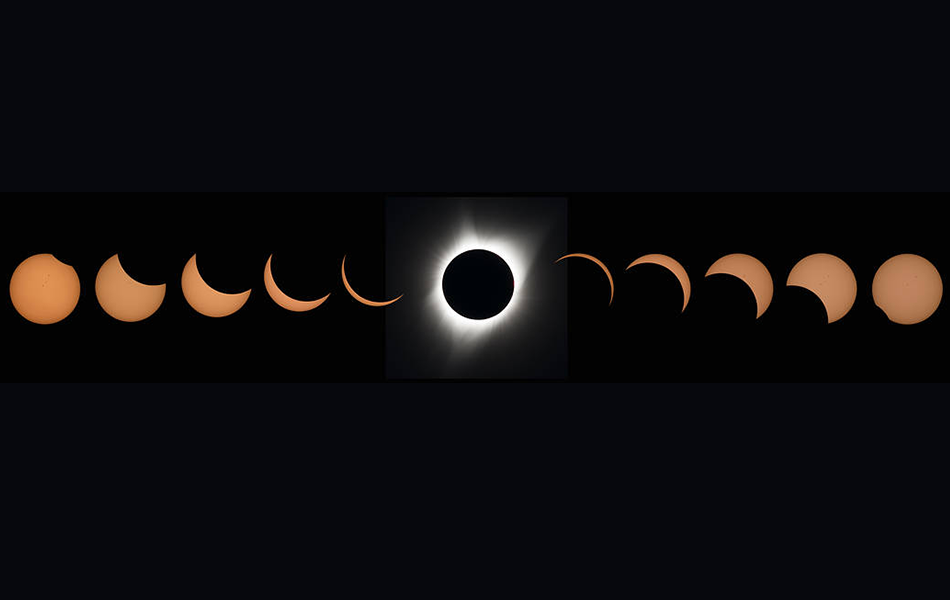
Header image: A composite of eleven pictures showing the progression of a total solar eclipse. [ Image credit: (NASA/Aubrey Gemignani), edited by the Adler Planetarium ]
An entire day is dedicated to celebrating the planet we know best this month, April 2023. Don’t forget to celebrate Earth Day on April 22; and while you’re at it, spend some time looking up at our celestial neighbors this month.
Evening Planets
During early-evening twilight this month, the planet Venus dominates the western sky. It’s brighter than minus-four magnitude, making it the brightest natural night-sky object other than the Moon. April 12–14, Venus appears between the Pleiades star cluster and the bright, reddish, star Aldebaran, both residing within the constellation Taurus the Bull. The evenings of April 22–23, Venus appears only about five degrees away from a very slim waxing crescent Moon. In the Chicago area, Venus sets in the west-northwest around 10:00 pm at the start of the month, and closer to 11:00 pm by the end of the month.
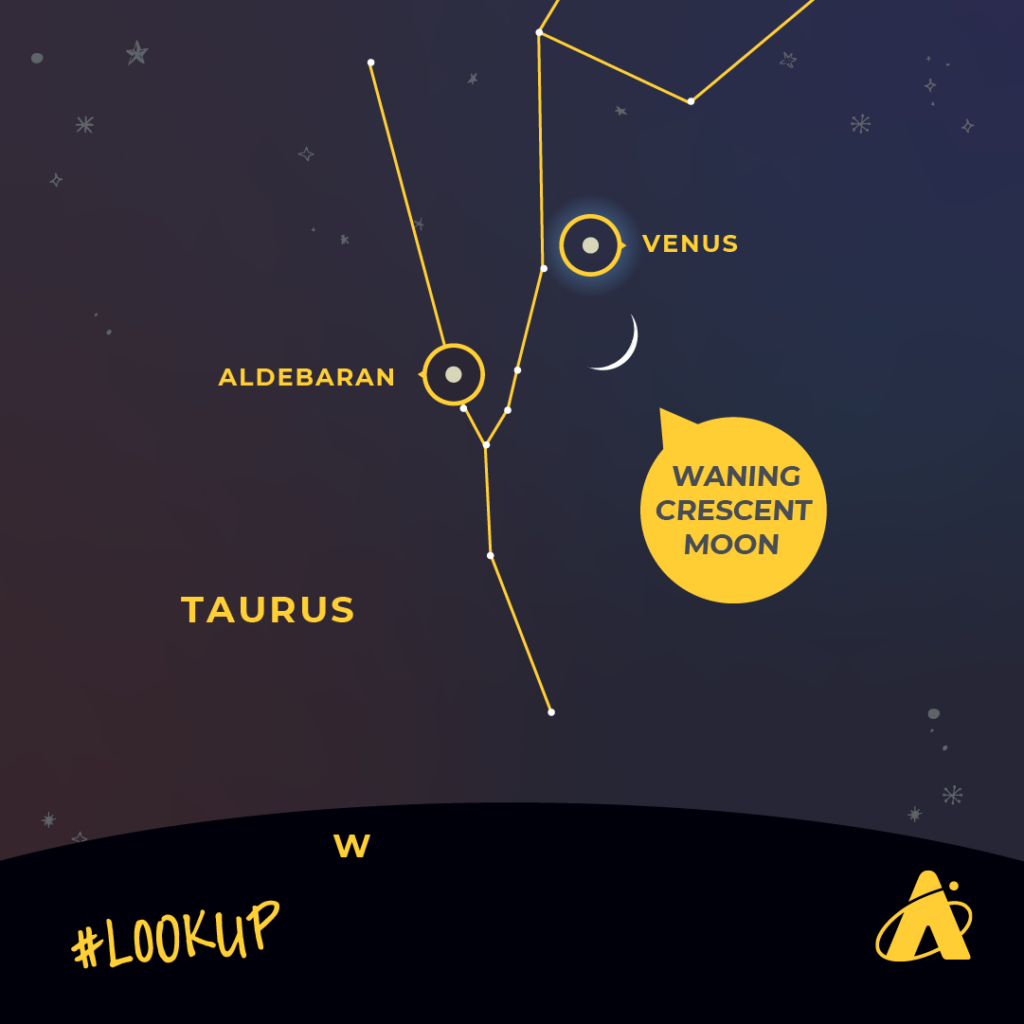
The first half of April is likely this year’s best opportunity to spot the planet Mercury—if you can catch it before it sets in the west-northwest. About 45 minutes after sunset, try looking very low and slightly north of the west horizon-point, about 20 degrees below and slightly to the right of bright Venus. Being the physically closest planet to the Sun, Mercury often appears too close to the Sun in the sky to even be visible. But from April 1–15, it’s far enough away from the Sun to be glimpsed, briefly. Additionally, it’s near zero-magnitude at this time, making it brighter than the stars currently near it. However, starting around April 15, Mercury gets dimmer and lower in the sky, while the Sun sets later each night. By April 20, Mercury drops to magnitude-two and is very low in the sky. By the last week of the month, it will be too dim and too close to the Sun to be seen.
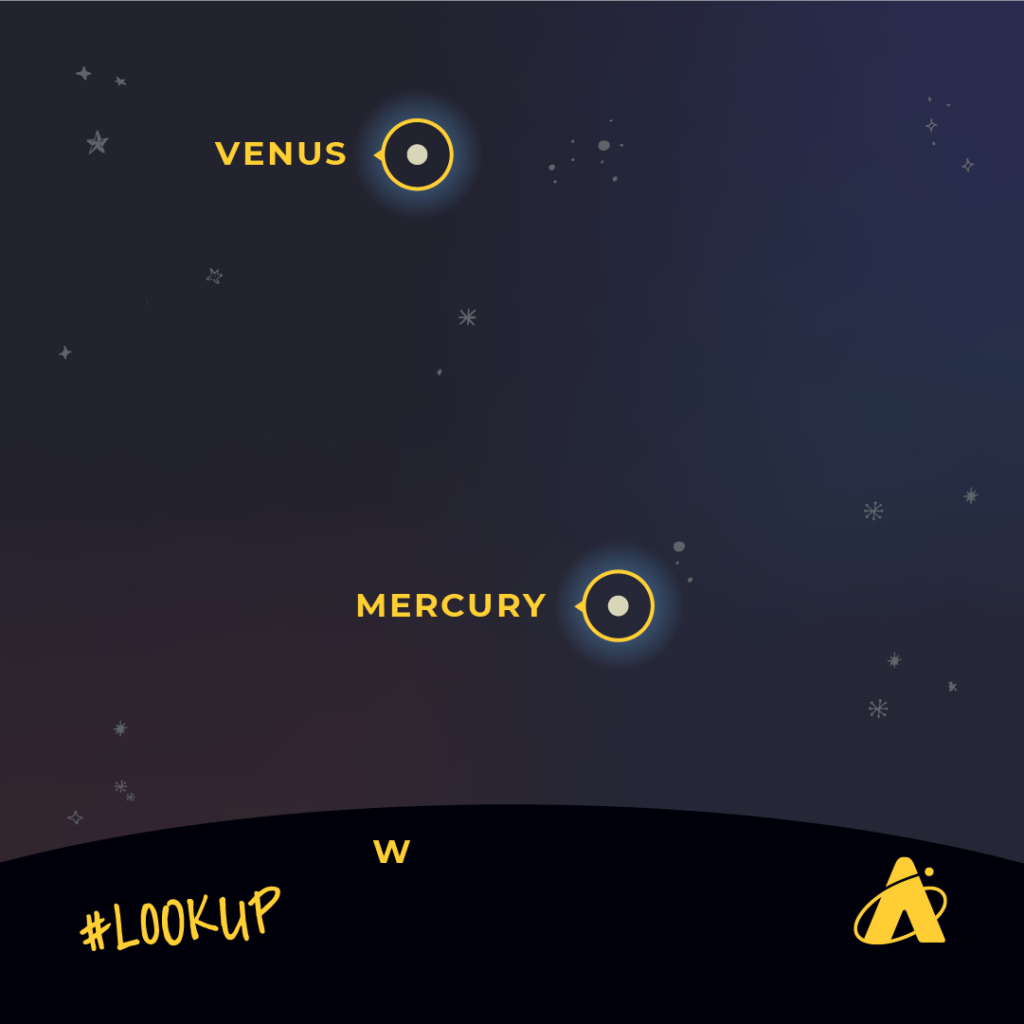
Looking above and to the left of Venus, try spotting the red planet, Mars. It’s about 40 degrees away from Venus on April 1. Mars moves closer throughout the month, reaching about 25 degrees away from Venus by April 30. It spends the month in the twin constellation, Gemini. Mars appears about as bright as Gemini’s two bright stars, Pollux and Castor. The night of April 25, Mars looms near the dark left edge of a waxing crescent Moon. It sets in the west-northwest around 2:00 am at the start of the month, and around 1:00 am at month’s end.
Hidden Planets
About an hour before sunrise this month, look for the planet Saturn. It will appear close to the east-southeast horizon. On April 16, it floats just above a waning crescent Moon. Saturn moves higher in the sky each morning; but the Sun also rises earlier each day. This causes Saturn to fade away low in the brightening southeastern sky.
Furthermore, the planet Jupiter is hidden in the glare of the Sun this month.
Eclipses Incoming
You may hear news of an annular solar eclipse taking place on April 20. This eclipse passes mainly over the Indian and Pacific Oceans and parts of Indonesia. Since the eclipse path is on the other side of the world from the United States, the eclipse occurs the night of April 19 in Chicago—and won’t be visible from the Adler.
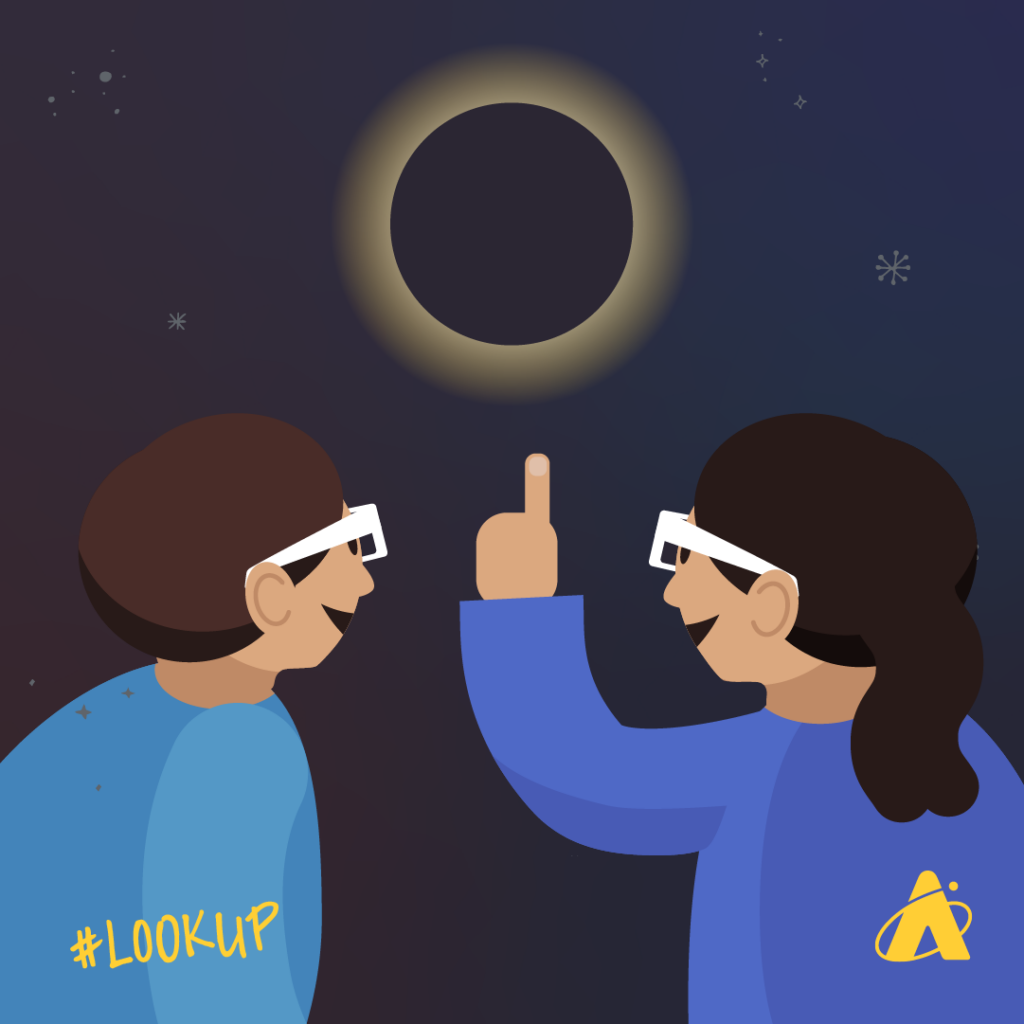
However, this serves as a good reminder to prepare for upcoming solar eclipses in North America! Later this year, we will see an annular eclipse on October 14, and a total solar eclipse next year, on April 8, 2024. Partial eclipses will be visible from Chicagoland on these dates; but special solar viewers or indirect projection systems are absolutely necessary to safely view partial and annular solar eclipses. So start preparing now!
Moon Phases
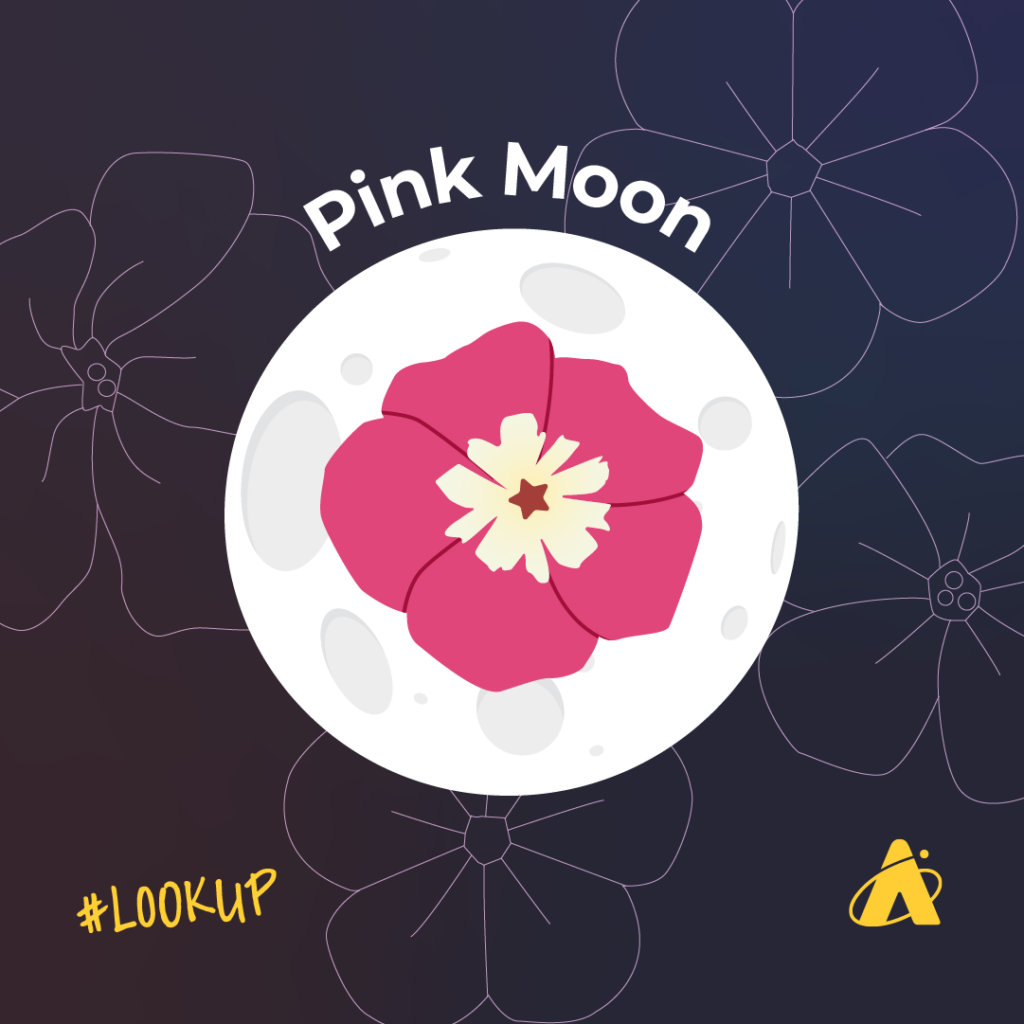
Full Moon: April 5
Last Quarter Moon: April 13
New Moon: April 19
First Quarter Moon: April 27
Please note: these descriptions are for the Chicago area, using Central time.
Subscribe To Skywatch Wednesday This April!
Tour the night sky with the Adler Planetarium’s Theaters Manager, Nick, in Skywatch Wednesday. Nick uses cutting edge visualizations, NASA images, and astrophotography to show you what you can see in the night sky throughout the year.
Check out our recent episode for an astronomical tour of the 2023 spring night sky.
Learn From Our Astronomy Educators
Watch exclusive live episodes of Sky Observers Hangout this April! Learn how to observe upcoming cosmic happenings, enhance your astrophotography skills and see celestial objects through a telescope virtually with our astronomy educators. Check out Michelle and Hunter’s recent episode about the Venus and Jupiter Conjunction that ocurred March 1.




